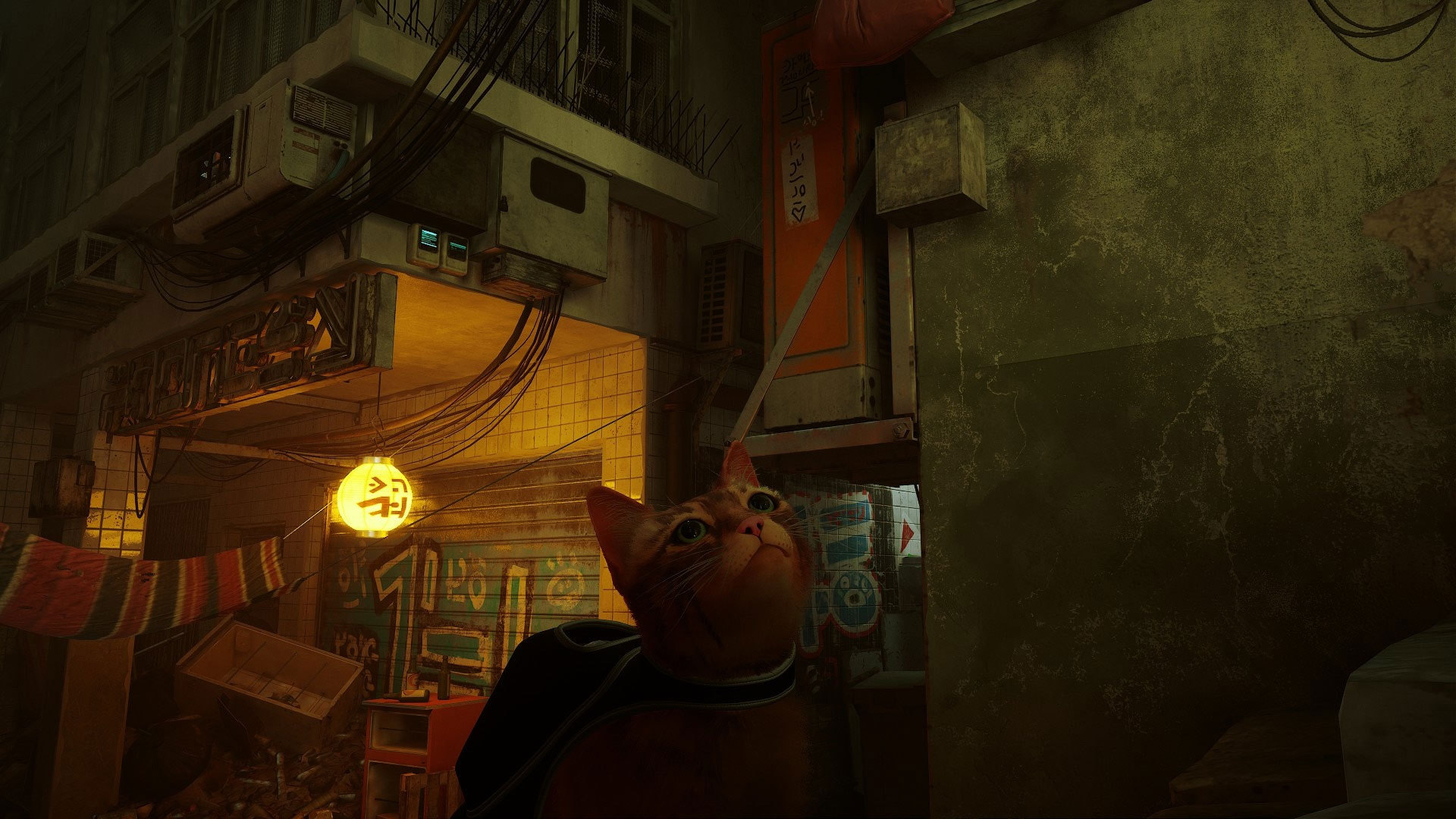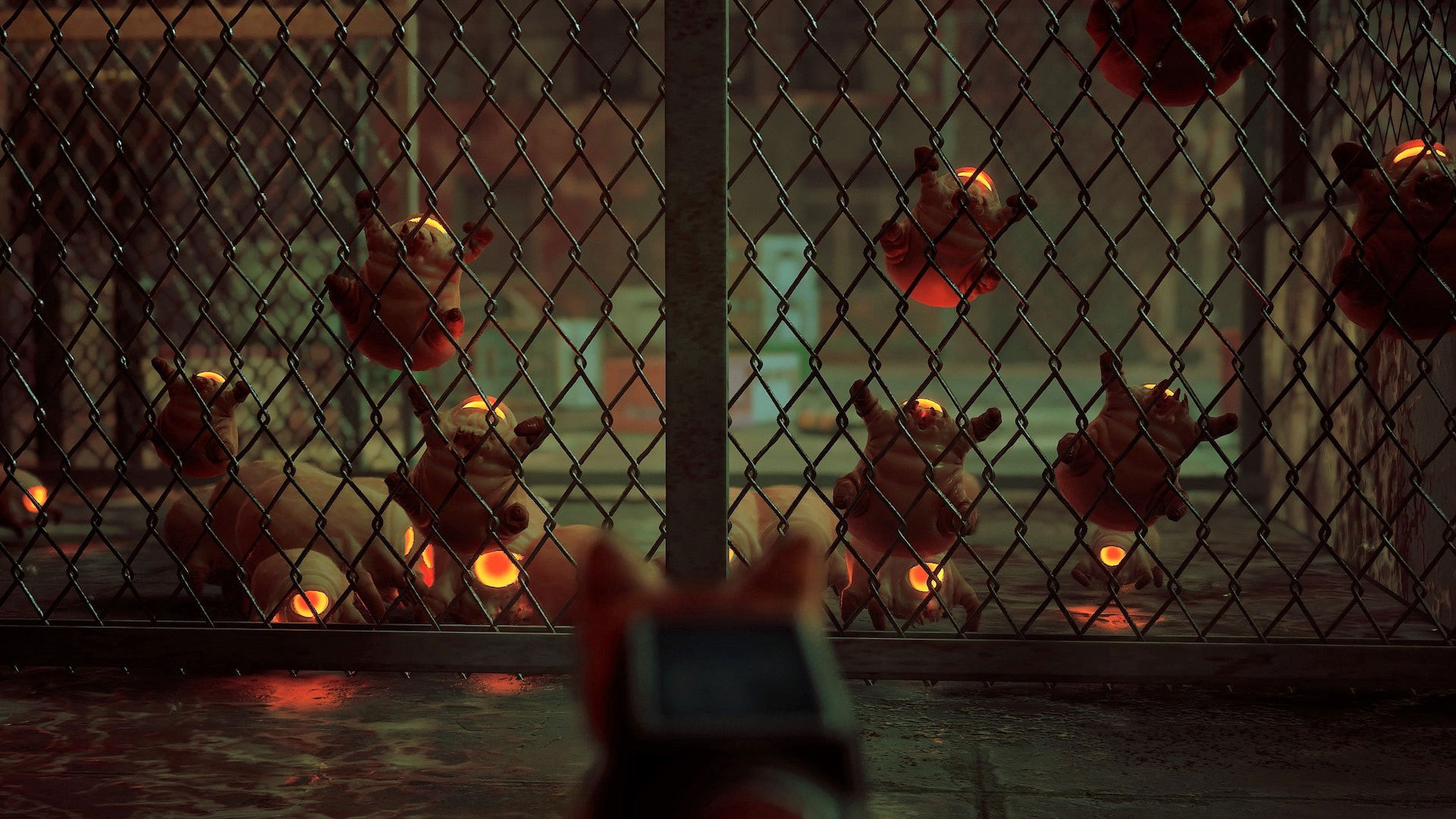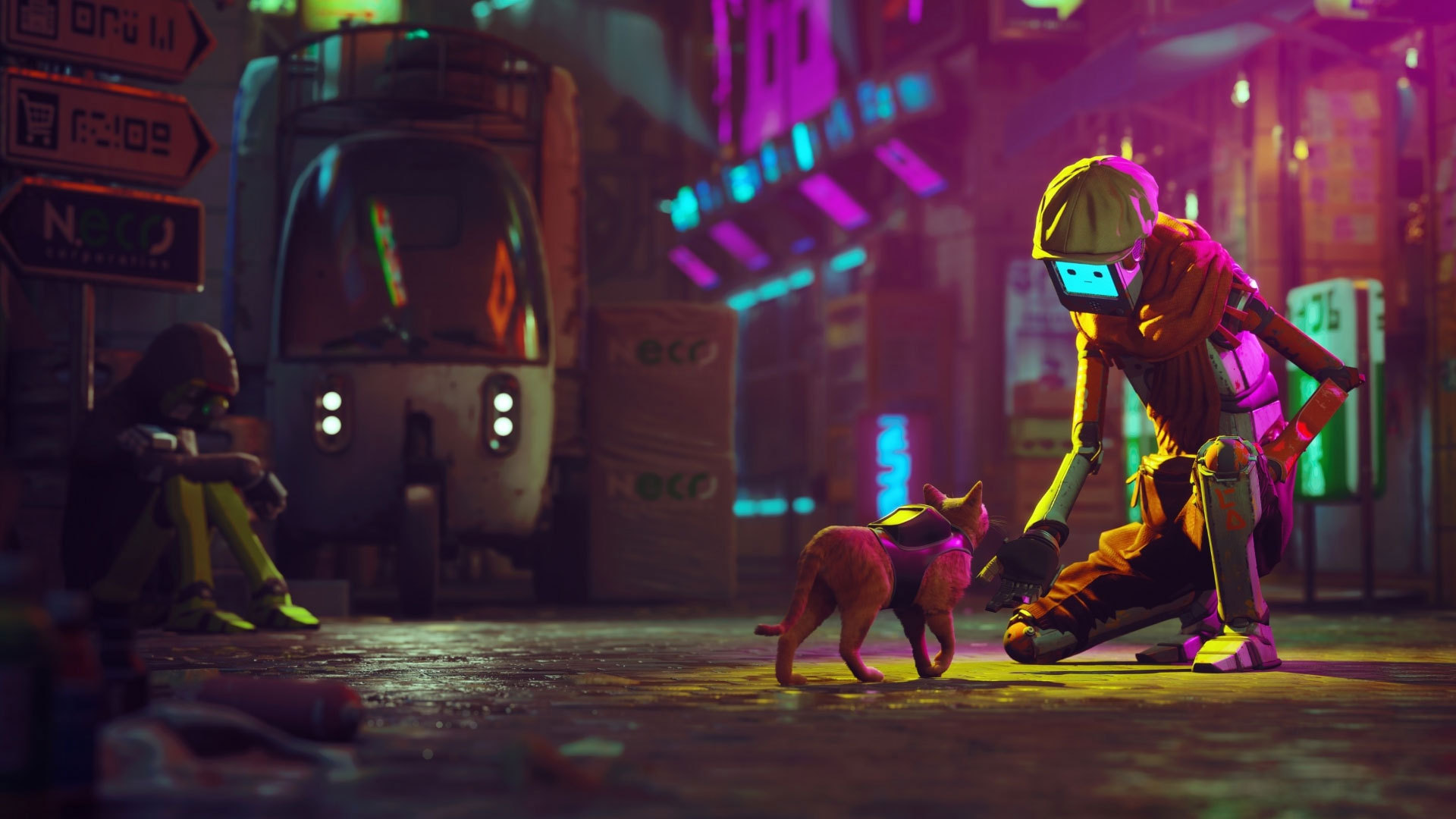Stray PlayStation 5 Review
Despite having an interesting theme, Stray fails to be a good game.
Reviewed by Rayan on Jul 23, 2022
Stray has been one of this year's most eagerly awaited releases ever since announced. It brings this idea to life by allowing players to embrace the role of a cat and go on a futuristic journey inside a metropolis that draws significant creative influence from the Kowloon Walled City. Developed by BlueTwelve Studio and published by Annapurna Interactive, Stray finally arrived after being announced some years ago. The game lasts for six hours; unfortunately, it becomes irritating before it reaches its climax.
Stray is a game that stands apart from the crowd for various reasons. It is a self-published game that has been praised for having visuals superior to many widely available games. To get out of a deserted city, a stray cat who has been hurt and is all alone himself must unravel an old riddle. This leads to an experience in a cybercity and a spectacular environment due to its depths. The concept has won over the support and consideration of everyone familiar with the social media around video games.

Stray is a story about a cat that becomes lost in a strange dystopian civilization after wandering about for a while. Even though no humans are left in this region, there is still enough life to be found in the cyborgs that still walk the streets. Players taking the role of this cat are tasked with unraveling the riddle surrounding the city's location, which is buried very deep beneath.
The futuristic metropolis has been broken into different zones, and as the story progresses, the scenario will move on to the following location automatically. For a creature who lives in a post-apocalyptic world, the locations are surprisingly new and vibrant in appearance. A significant portion of the praise for that belongs to the robots the cat comes across on its travels. Nearly every character has a few memorable pieces of conversation to go along with the strange ways they dress and behave.
Our cat, who seemed to have a quiet existence, is suddenly forced to face a harsh world that it was unaware of before its tragic misfortune. Our ultimate objective is to travel back to where it started, but being only a cat makes it tough to communicate with anyone it meets along the way. This is made easier by the little Drone B-12, found along the road, which travels with the cat in a slick futuristic backpack. The trip begins with a fall that will surely break the hearts of anybody with even the tiniest amount of sympathy for animals. Now we find ourselves on a dreary planet filled with garbage and deprived of sunlight, populated only by robots.

Anyway, this adventure is played from the perspective of a stray cat, and when you play as a cat, you get a viewpoint of the world that is rather unusual. Exploring the neon-lit walkways of the subterranean metropolis gives a pleasant feeling of ambiance and, at the same time, feels unique too. The designers have done a fine job portraying animal nature, even though features have no gameplay function. You may not be able to see all of the creature's intricacies in its face, but the motions and a few beautifully recreated typical actions give an impression of fussiness. There are other examples, such as the cat can scratch on benches, doors, carpet, and leap enthusiastically on a cardboard box. It can even knock different things off of surfaces with its dexterous paws.
Once you begin working with robot B-12, the scenario will only get more involved. The cat is implied to be the source of all your activities throughout the game, including breaking down doors, initiating dialogues, and displaying items to non-player characters. B-12 is the one who gives commands, even though it is a sentient machine. According to the suggestions for the buttons, the cat uses him in some way. And even when B-12 does provide some kind of direction to the cat, it does it in language that is incomprehensible to the animal. Because you're controlling the cat, it's apparent that he's speaking directly to you. It disrupts immersion to continually be reminded of your position as Stray's puppet master. It doesn't quite fit together.
Most of the time in Stray will be spent adventuring, and the robots that populate the town will provide a wide variety of optional missions. The majority of these missions involve going and fetching things since you play a cat. There is no need to attend to the optional tasks; nevertheless, if you choose to neglect them, the game will finish rather swiftly. Finding sheet music and other goods wasn't a problem since these activities give the impression that the environment is inhabited. Though sometimes it gets frustrating to be chasing the Zurks and hoping to make a leap that ends in your death.

At some point during the gameplay, you will be able to acquire a weapon to engage in combat with the Zurks; but it will run out of power very rapidly and need constant recharging. Even if you possess the skills to defend yourself, the Zurks will continue to be a threat. At this point, the game's objective felt like to rush and swarm without concern for the consequences. On the other hand, the pace of the game is quite well done, although dealing with the Zurks may be hard at times and requires an exceptionally long amount of time. Apart from the Zurks, it's up to players to discover the other enemies in the game.
Throughout the game, you will find yourself in several different situations where you are free to move about as you want and achieve many simple objectives. Stray, however, is not always easy to go by, much like classic point-and-click adventure games. There is often a single, straightforward answer to every challenge, and finding it typically entails searching for a particular item or robot, among many other things. Despite their simplicity, these puzzles are some of the most thought-provoking in the game. And they force you to explore every nook and cranny of the city. Probably the best part of the game is reaching the stage in the middle of the city full of neon lights and locations to discover unusual characters in the most entertaining circumstances.
Although the levels have a pleasant degree of realism, they do not test the PlayStation hardware's capabilities. Stray has a relatively low level of visual quality in terms of its technical aspects. The cat's movements aren't awe-inspiring, and when it does many leaps or motions, the animations aren't always very well put together. Despite the beautiful neon lighting, the texture quality on everything from the cat to robots to the surroundings is still at a basic level and is typically missing in detail. And except for a little blip in the fps here and there, the framerate remains stable.

Despite this, Stray is one of the most emotional games out there. Even in a complex world of robots, it conveys love, sympathy, and generosity that will interest anyone who'd relate to the narrative and its environment. To put it another way, it's impressive how much attachment we develop for the NPCs whom we know for an hour or so. Stray successfully conveys a story that pushes us on an emotional level since, through the cat, many robots continue to find a new purpose, which is one of the reasons why the story is so emotionally engaging.
Sadly, however, the overall plot doesn't have much emotional effect since you interact as a cat throughout the game. For instance, the robot companion uncovers a slew of fascinating facts about himself, but that doesn't worry the cat in the slightest. Ironically, it either falls to sleep following an unexpected turn of events or accidentally spills over another bottle of beer. The cat in the story is unaffected by the events that unfold, and as a result, the narrative fails to engage the player fully.
At the same time, Stray offers minimal incentive to play it again. The game finishes roughly around six hours, and while everything is discovered, including all of the optional objectives, there's nothing much to go back to it again. The fact that the complexity of the slums segments never returns to any significant degree is perhaps the most disappointing aspect of Stray. The game immediately proceeds to shut back up once it has opened up, which remains the case. After a series of straight levels, you arrive at a second vast, virtually wholly flat region, both physically and symbolically.
Despite having an interesting theme, Stray fails to be a good game. In addition to its charming visual touch, the place's ambiance is enticing, the plot is compelling, and the characters are interesting in their unique ways; nonetheless, the elements do not come together very well. Stray has admirable intentions, and placing oneself in a cat’s paws is an engaging way to think about things. It's fun, particularly during the exploration periods when you can observe the neon-lit world through the eyes of a cat and scale skyscrapers and other seemingly unreachable locations. It falls flat when it tries to use exciting action to excuse the fact that it is a video game; the fighting is as uninspiring as it is pointless. It may be brief, but there is no compelling reason for it to be expanded upon.
Azfar Rayan (@AzfarRayan)
Editor, NoobFeed
Senior Editor, NoobFeed
Verdict
50
Related News
No Data.


